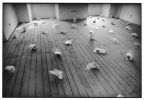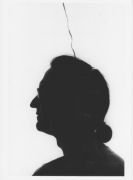"In my opinion, the attribute of today's mercurial traveller is not anymore the wingfoot, but the suitcase. The suitcase forces the traveller to make a choice between what is necessary and what is unnecessary for the journey, just like as the artist has to choose what is necessary and what is unnecessary for his artwork. In the same way, the messenger who has to transmit a message has to select the important information from the unimportant information."
Bert Theis, 1994
Supported by The Ministry of Culture of Luxemburg
Visual artist Bert Theis (1952 – 2016) was based between Berlin and Milan, and had been a proponent of urban welfare for the last 20 years – his work often engaged with themes of ecological policies, urbanisation and gentrification. His last solo exhibition, Aggloville (2015), was held at Parco Arte Vivente, Turin, and included maquettes, projects, videos and digital prints on canvas.
Themes such as sustainable urbanization, ecological policies and gentrification are the core of Bert Theis’s artistic research. For many years, he has tried to fight a neoliberal model of urban development in various geopolitical contexts, from Europe to Eastern Asia.
Theis was mostly known for his large, site-specific urban installations in densely populated areas based on public platforms, like park pavilions. For more than a decade, he worked with Isola Art Centre, founded the Office for Urban Transformation (both in Milan), and organized and directed long-term projects looking into the "conflict opposing the inhabitants of the Isola district, the Milanese city government and an American multinational company."
His works have been featured at various international biennials, including Venice Biennale (1995), Manifesta 2, Gwangju Biennial (2002), Skulptur Projekte Münster (1997) and the Taipei Biennial (2008).






